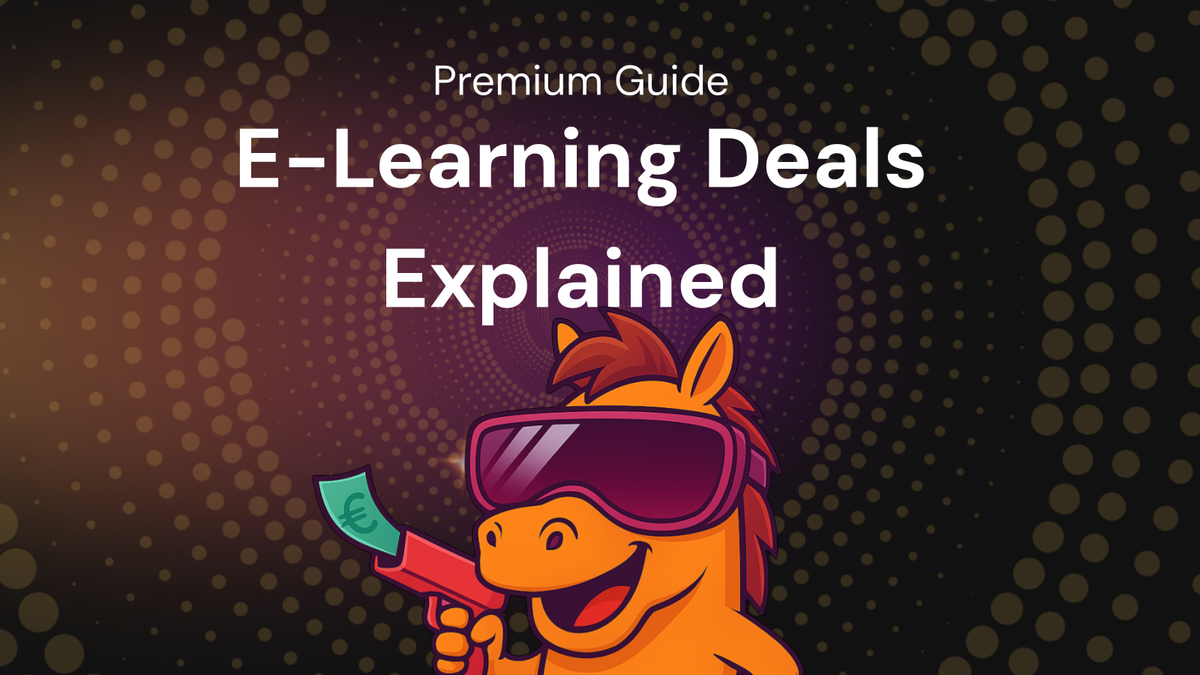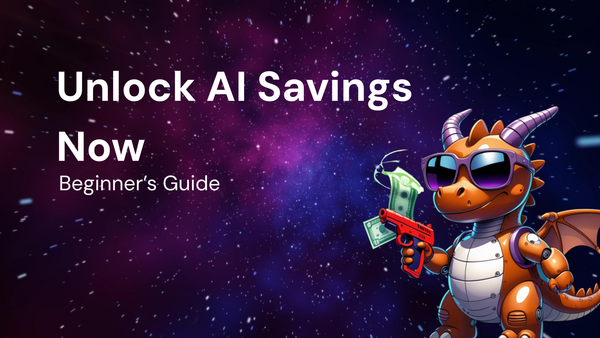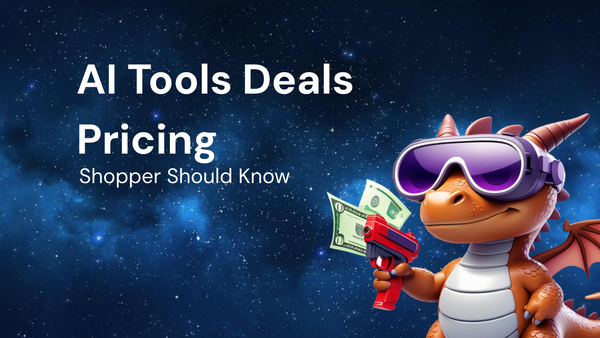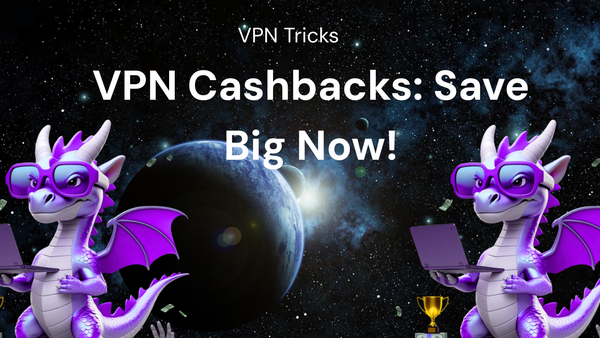e-learning platforms Deals Explained – Freemium Vs Premium + discount Guide

E-Learning Platforms Deals Explained – Freemium Vs Premium + Discount Guide
The world of online learning has exploded in recent years, offering unprecedented access to knowledge and skills development. Whether you're looking to upskill for a career change, learn a new hobby, or simply expand your horizons, e-learning platforms provide a flexible and convenient way to achieve your goals. However, navigating the vast landscape of these platforms can be overwhelming. One of the first decisions you'll face is choosing between freemium and premium models. This guide will break down the differences, explore popular platforms, and offer tips on how to find the best deals and discounts.
Understanding the E-Learning Landscape
Before diving into the specifics of freemium and premium models, it's crucial to understand the broader e-learning landscape. E-learning platforms cater to a diverse range of needs, from academic subjects and professional skills to creative arts and personal development. Some platforms focus on specific niches, while others offer a more comprehensive catalog.
Categories of E-Learning Platforms:
- University-Based Platforms: These platforms, often extensions of traditional universities (e.g., Coursera, edX), offer courses, specializations, and even full degree programs. The content is typically created and delivered by university professors and experts.
- Professional Development Platforms: Focused on career advancement and skill acquisition (e.g., LinkedIn Learning, Udemy, Skillshare), these platforms offer courses on topics such as business, technology, marketing, and leadership.
- Creative Skills Platforms: Designed for learning artistic and creative skills (e.g., Domestika, MasterClass), these platforms feature courses taught by renowned professionals in fields like photography, design, writing, and music.
- Language Learning Platforms: Dedicated to teaching foreign languages (e.g., Duolingo, Babbel, Rosetta Stone), these platforms use interactive lessons, gamified exercises, and personalized learning paths.
- Coding Bootcamps & Tech Training Platforms: Intensive programs designed to equip individuals with the skills needed for a career in software development and technology (e.g., Codecademy, General Assembly, Udacity's Nanodegrees).
- Subscription-Based Learning Platforms: Offer unlimited access to a library of courses for a recurring monthly or annual fee. (e.g. Skillshare, LinkedIn Learning, DataCamp)
Freemium E-Learning: The Allure of "Free"
The term "freemium" is a portmanteau of "free" and "premium," and it describes a business model where a basic version of a product or service is offered free of charge, while a more advanced or feature-rich version is available for a fee. In the context of e-learning, freemium platforms typically provide access to a limited selection of courses, modules, or features without requiring payment.
Key Characteristics of Freemium E-Learning Platforms:
- Free Basic Content: A selection of courses, modules, or lessons are available for free.
- Limited Access: The free content is often restricted in scope, depth, or duration. You might only get access to introductory modules, a limited number of exercises, or a trial period.
- Upselling: The primary goal of a freemium model is to encourage users to upgrade to a paid subscription or purchase individual courses. Free users will frequently encounter prompts to unlock premium features.
- Advertising: Some freemium platforms may display advertisements to free users to generate revenue.
- Community Features May Be Limited: Access to community forums, Q&A sessions with instructors, or personalized feedback might be restricted to premium members.
Advantages of Freemium E-Learning:
- Try Before You Buy: Freemium models allow you to sample the platform's content and teaching style before committing to a paid subscription. This is particularly valuable if you're unsure whether a platform aligns with your learning preferences.
- Cost-Effective for Casual Learners: If you only need to learn a specific skill or explore a topic superficially, the free content may be sufficient. You can acquire basic knowledge without incurring any costs.
- Exposure to a Wider Range of Topics: Freemium platforms often offer free courses across various subjects, allowing you to explore different fields and identify areas of interest.
- Low Barrier to Entry: No financial investment is required to start learning. This makes e-learning accessible to a broader audience, regardless of their budget.
Disadvantages of Freemium E-Learning:
- Limited Content Depth: Free courses typically only scratch the surface of a topic. You may not gain the in-depth knowledge and skills required for professional applications.
- Incomplete Learning Experience: Access to supplementary materials, practice exercises, and assessments is often restricted to premium members. This can hinder your learning progress and limit your ability to apply what you've learned.
- Distracting Advertisements: If the platform displays ads to free users, they can be disruptive and detract from the learning experience.
- Lack of Personalized Support: Free users typically don't have access to personalized feedback from instructors or support staff. This can be challenging if you encounter difficulties or have specific questions.
- Constant Upselling: The constant prompts to upgrade to a paid subscription can be annoying and create a sense of pressure.
Examples of Freemium E-Learning Platforms:
- Coursera: Offers a vast catalog of courses from top universities and institutions. Many courses can be audited for free, allowing you to access lecture videos and readings. However, you'll need to pay for a certificate of completion and access to graded assignments.
- edX: Another leading provider of university-level courses. Similar to Coursera, edX offers many courses that can be audited for free, but a paid subscription is required for certificates and graded assessments.
- Khan Academy: A non-profit organization that provides free educational resources for learners of all ages. Covers a wide range of subjects, including math, science, history, and computer programming. The entire platform is free.
- Duolingo: A popular language-learning platform that uses a gamified approach to teach foreign languages. The basic version of Duolingo is free, but a premium subscription unlocks additional features such as ad-free learning and offline access.
- Codecademy: Offers interactive coding courses in various programming languages. A basic account is free and provides access to introductory courses. A paid subscription unlocks more advanced courses and projects.
Premium E-Learning: Investing in Your Education
Premium e-learning platforms require a paid subscription or the purchase of individual courses. These platforms typically offer a more comprehensive and structured learning experience, with access to a wider range of content, resources, and support.
Key Characteristics of Premium E-Learning Platforms:
- Paid Access: Requires a paid subscription or the purchase of individual courses.
- Comprehensive Content: Offers a wide range of courses, modules, and resources covering various topics in depth.
- Structured Learning Paths: Provides structured learning paths with clear objectives and milestones.
- Assessments and Certification: Includes assessments, quizzes, and projects to evaluate your understanding and skills. Many platforms offer certificates of completion upon successful completion of a course or program.
- Personalized Support: Offers access to personalized feedback from instructors, support staff, and community forums.
- No Advertisements: Premium users typically don't see advertisements.
Advantages of Premium E-Learning:
- In-Depth Knowledge and Skills: Gain comprehensive knowledge and skills in your chosen field.
- Structured Learning Experience: Follow a structured learning path with clear objectives and milestones.
- Access to All Resources: Access all course materials, including videos, readings, exercises, and assessments.
- Personalized Feedback and Support: Receive personalized feedback from instructors and support staff.
- Certification and Recognition: Earn certificates of completion that can enhance your resume and career prospects.
- Focused Learning Environment: Enjoy a focused learning environment without distractions.
Disadvantages of Premium E-Learning:
- Cost: Requires a financial investment.
- Commitment: Requires a commitment to completing the course or program.
- Time Investment: Requires a significant time investment.
- Risk of Dissatisfaction: There is a risk that you may not be satisfied with the quality of the content or the learning experience.
Examples of Premium E-Learning Platforms:
- MasterClass: Offers courses taught by world-renowned experts in various fields, including cooking, writing, acting, and business.
- LinkedIn Learning: Provides courses focused on professional development and skill acquisition.
- Udemy: A vast marketplace of online courses covering a wide range of topics.
- Skillshare: Offers courses focused on creative skills, such as design, photography, and illustration.
- DataCamp: Focuses specifically on data science and analytics, offering courses and career tracks.
- Pluralsight: Provides technology skills training for software developers, IT professionals, and data scientists.
- Treehouse: Offers courses focused on web development and design.
Choosing Between Freemium and Premium: A Framework
The best choice between freemium and premium e-learning depends on your individual needs, learning goals, and budget. Consider the following factors:
- Learning Goals: What do you want to achieve through e-learning? Are you looking to acquire basic knowledge, develop specific skills, or pursue a career change? If you have ambitious learning goals, a premium platform is likely the better option.
- Learning Style: How do you learn best? Do you prefer structured learning paths, personalized feedback, and interactive exercises? Premium platforms often offer a more engaging and supportive learning environment.
- Budget: How much are you willing to spend on e-learning? If you have a limited budget, a freemium platform may be a good starting point. However, be prepared to upgrade to a paid subscription if you want to access more comprehensive content.
- Time Commitment: How much time can you dedicate to e-learning? Premium courses often require a significant time investment. If you have limited time, a freemium platform may be a more manageable option.
- Prior Knowledge: What is your current level of knowledge in the subject you want to learn? If you're a beginner, a freemium platform may be a good way to get started. However, if you have some prior knowledge, you may be able to jump directly into a premium course.
Finding E-Learning Deals and Discounts: Maximizing Value
Regardless of whether you choose a freemium or premium platform, there are several ways to find deals and discounts that can save you money.
Strategies for Finding Discounts:
- Platform Promotions: Most e-learning platforms offer regular promotions and discounts on their courses and subscriptions. Sign up for their email newsletters or follow them on social media to stay informed about upcoming deals.
- Holiday Sales: Many platforms offer significant discounts during major holidays, such as Black Friday, Cyber Monday, and the end-of-year holidays.
- Student Discounts: Some platforms offer discounts to students who can provide proof of enrollment.
- Group Discounts: If you're learning with a group of friends or colleagues, you may be able to negotiate a group discount.
- Bundled Deals: Some platforms offer bundled deals that include multiple courses or subscriptions at a discounted price.
- Free Trials: Many premium platforms offer free trials that allow you to access their content for a limited time.
- Coupon Codes: Search online for coupon codes that can be applied to your purchase. Websites like RetailMeNot or Honey can help you find these codes.
- Referral Programs: Some platforms offer rewards for referring new users.
- Lifetime Deals: Be cautious of platforms advertising "lifetime" access for a one-time fee. While tempting, these deals can be unreliable, as the platform's long-term viability isn't guaranteed.
- Check for Partnerships: Universities, professional organizations, and employers sometimes partner with e-learning platforms to offer discounted access to their members or employees.
- Browse Aggregator Sites: Websites that compile and categorize online courses often highlight deals and discounts from various platforms.
Tips for Evaluating E-Learning Platforms Before Committing:
- Read Reviews: Before enrolling in a course or subscribing to a platform, read reviews from other users. Pay attention to both positive and negative feedback to get a balanced perspective.
- Check the Instructor's Credentials: Ensure that the instructor has relevant experience and expertise in the subject matter. Look for instructors with a strong track record and positive reviews.
- Review the Course Syllabus: Carefully review the course syllabus to understand the topics covered, the learning objectives, and the assessment methods.
- Watch Sample Videos: Many platforms offer sample videos that allow you to get a sense of the instructor's teaching style and the quality of the content.
- Test the Platform's Interface: Make sure that the platform's interface is user-friendly and easy to navigate.
- Consider the Community: If you value interaction with other learners, choose a platform with a strong community forum or online discussion group.
- Check the Platform's Refund Policy: Understand the platform's refund policy before making a purchase.
Specific Platform Discount Examples:
- Udemy: Udemy frequently offers flash sales with courses discounted to $10-$20. Keep an eye on their website and email for these promotions.
- Coursera: Coursera offers financial aid to eligible learners who cannot afford to pay for courses. They also have Coursera Plus, a subscription that provides unlimited access to a vast catalog of courses.
- Skillshare: Skillshare often offers extended free trials and discounts for new subscribers.
- LinkedIn Learning: LinkedIn Learning is often included as part of a LinkedIn Premium subscription, which also offers other benefits such as enhanced networking and job search tools.
Conclusion: Empowering Your Learning Journey
E-learning platforms provide a powerful and accessible way to learn new skills and advance your career. By understanding the differences between freemium and premium models, carefully evaluating your options, and taking advantage of available deals and discounts, you can maximize the value of your investment and unlock your full learning potential. Remember to prioritize your learning goals, choose a platform that aligns with your learning style, and continuously seek opportunities to enhance your knowledge and skills. Your e-learning journey is an investment in yourself, and with careful planning and execution, it can lead to significant personal and professional growth. Good luck on your learning adventure!




